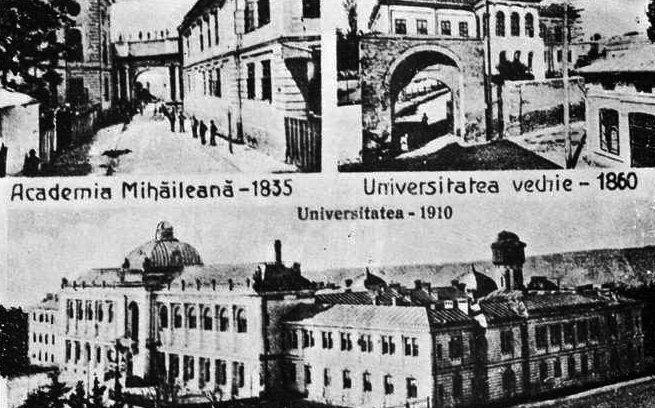We take pride in being the first modern university of Romania, inheriting values, reputation and educational knowledge. Established in October 1860, Alexandru Ioan Cuza University of Iaşi is the oldest university in our country. Its history follows the patterns of the Romanian nation. The University of Iaşi, as it was named at first, was founded in 1860, only one year after the establishment of the Romanian state, and it was both a result and a catalyst of the rise of the Romanian national spirit. It was no historical coincidence that the city of Iaşi became the host of the highest institution in Romanian education: for ages, Iaşi had represented a privileged cultural area, preserving both the native and the European cultural spirit in a conquered territory. In the 17th century, the academy in Iaşi was already synchronized with the European spirit and model. Courses were taught in Greek, the language of culture in the European Orient.
The 19th century witnessed the rise of the nationalist spirit, of Romanian language, culture and conscience. The solemn inauguration of the University of Iaşi, on 26th October 1860, was to hallmark its long evolution, representing the first great step in the transition from medieval high school to modern higher education.
With only three faculties in the beginning – Law, Philosophy and Theology, the university gradually became a truly European academic centre. The mobility of the teaching staff, students, books and ideas placed the University of Iaşi on a professional and scientific level that was widely recognized.
After World War II, the structural changes in the political regime in Romania determined deep transformations in higher education, as well. It also imposed a new ideological horizon, a dominant immobility and dogmatism that obstructed initiatives. Higher education was isolated while the traditional relationships established with the great Western schools and trends became very difficult to maintain. In our university, the structure of faculties changed several times after 1948. The eight faculties (Mathematics – Mechanics, Physics, Chemistry, Biology – Geography, Law, Philology, History – Philosophy and Economics) ensured the training of specialists in fundamental education and research fields. It is important to underline that the things imposed in terms of dogmatism and ideology had only a formal official value, most of the academic staff preserving their dignity and academic status. Concessions were formal, not basic. It was a price that had to be paid for saving both the academia and the academics.
The fall of the totalitarian regime in December 1989 opened new perspectives for Romanian education. The reconstruction activity was spontaneous and radical, involving all fields: structure, curriculum, communication system, human resources. University autonomy, decentralization and freedom of decision led Romanian higher education towards new horizons. While still being in a difficult financial situation, it gradually regained its place in the European community.
Alexandru Ioan Cuza University of Iaşi has the revelation of freedom of thought and action. We feel it in the quality of education and research, in the determination to achieve a work of excellence.

